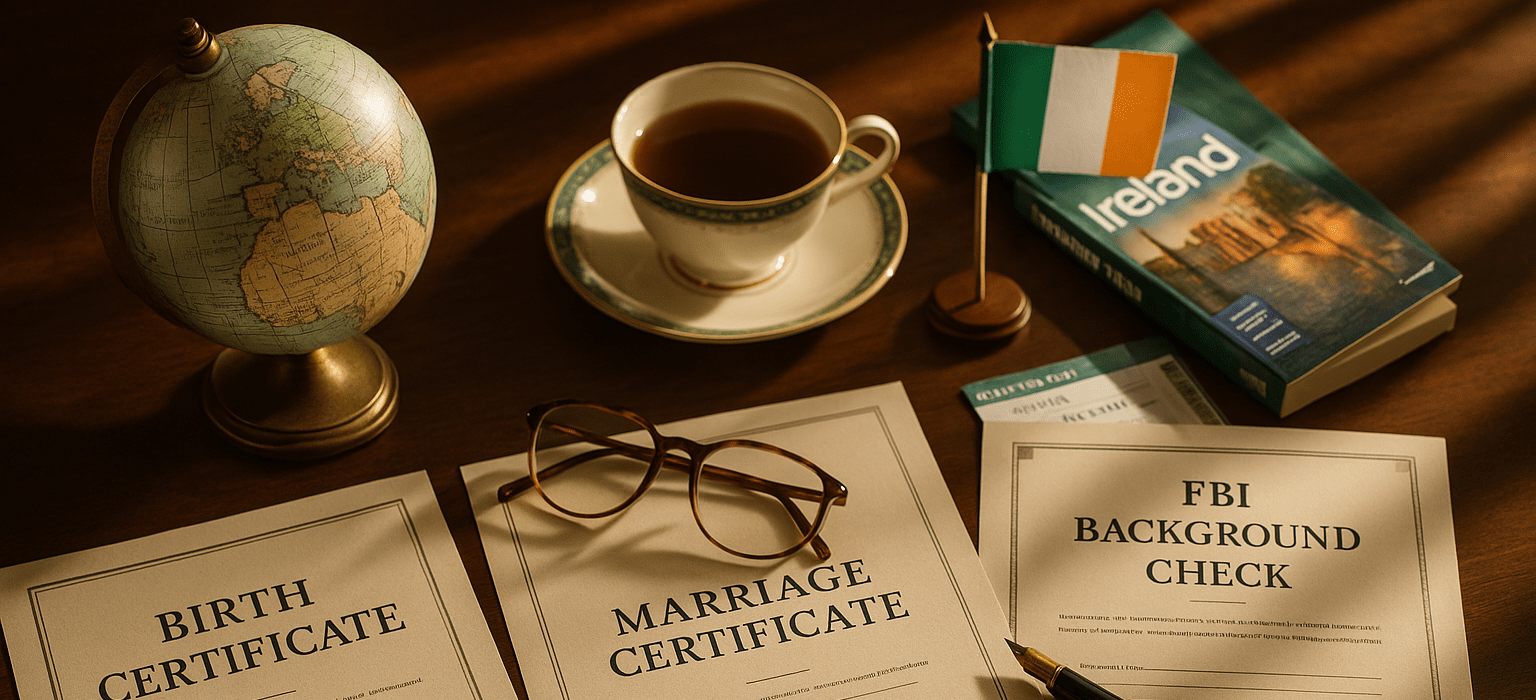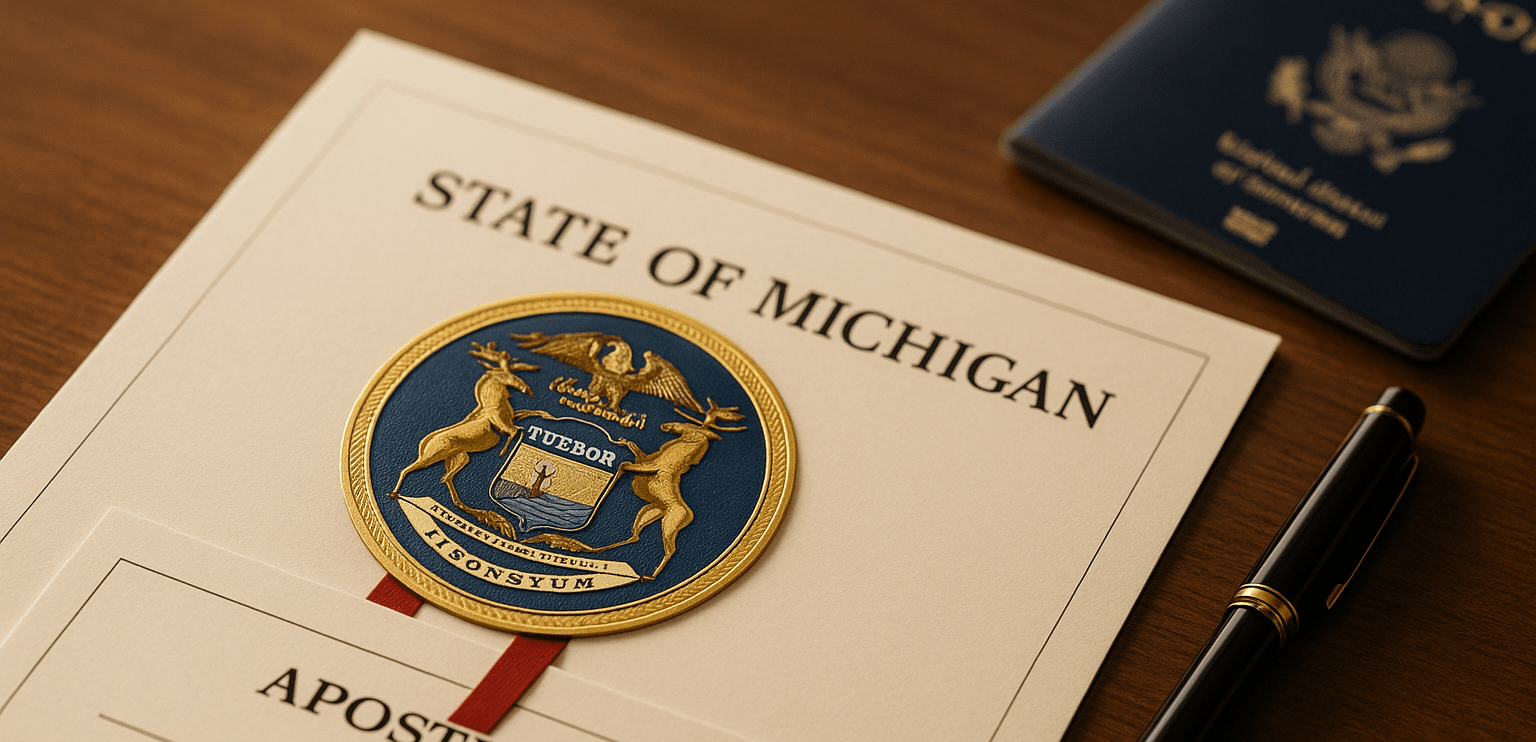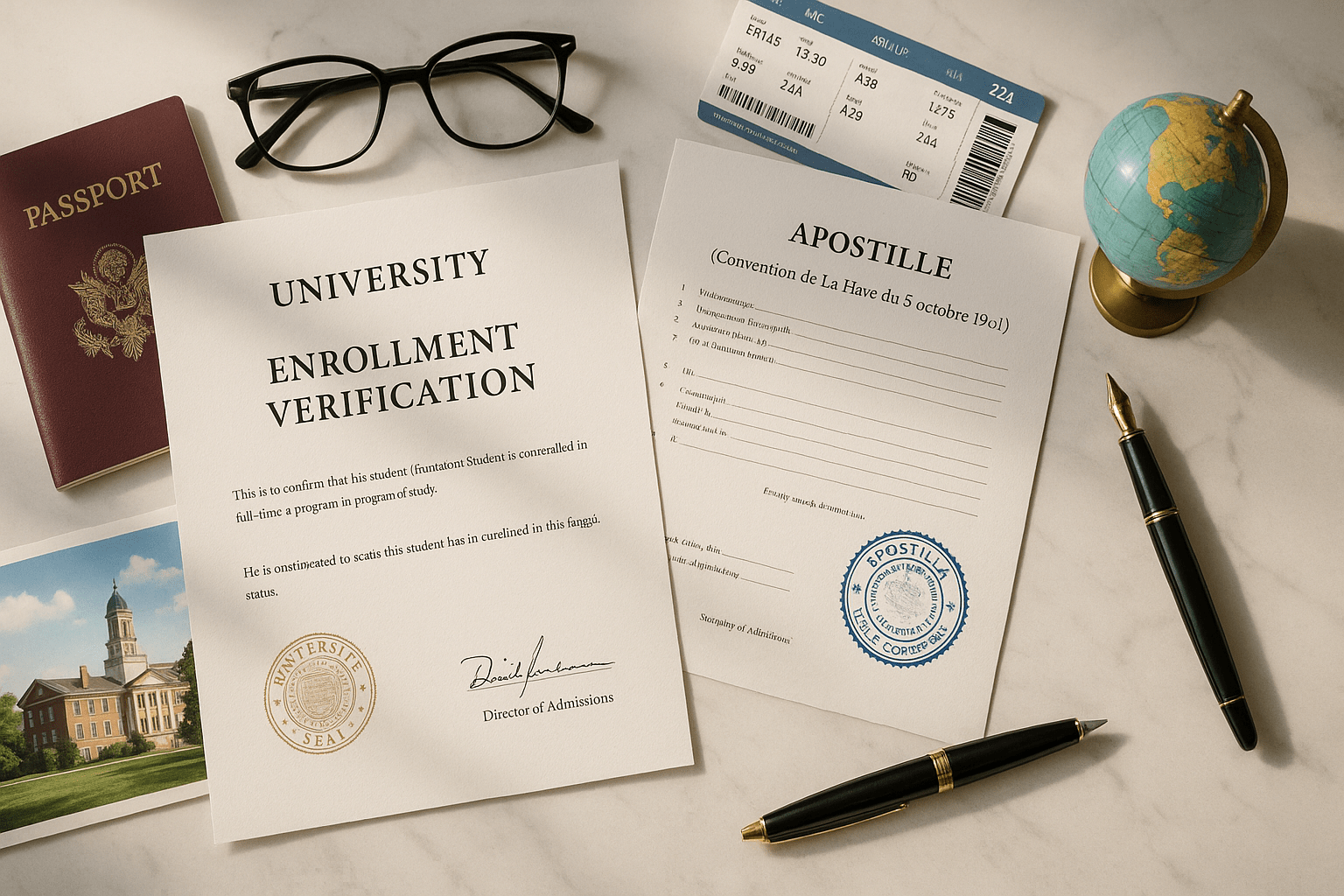
Apostille Translation Services: A Guide to Requirements
As you want to apostille U.S. legal documents for use in a country where English isn’t the official language, you’ll likely need certified translations. In such cases, translation services become essential, helping eliminate language barriers in your paperwork. In this post, you’ll learn what apostille translation involves, follow a clear step-by-step guide for obtaining an apostille for certified translation, and discover how to avoid common pitfalls during this process. Let’s break it down!
What is an Apostille Translation and When Do You Need It?
When you plan to use a U.S.-issued document in a non‑English‑speaking country, authorities often require two things: a certified translation into the local language and an apostille. Because the translation comes with a translator’s certificate that bears a notary’s signature, the apostille’s role is to verify that notary’s authority and signature, making the notarization legally valid overseas.
So, when do you need to translate and apostille your document? Any time the destination country is a member of the Hague Apostille Convention, most commonly for immigration, business, employment, or academic purposes. For instance, if you present your birth certificate to a registry office in Germany, you’ll have to ensure both the birth certificate translation and apostille are in place. Without these steps, the document may be rejected, potentially delaying your plans.
Documents That Require Apostille Translation
Certain documents require apostille translation for foreign use. Examples include:
- Birth and death certificates
- Academic degrees and diplomas
- Marriage licenses and divorce decrees
- Certificates of incorporation and business contracts
- Powers of attorney and court orders
For instance, if you expand your current business by opening a branch in France, you’ll need to get the certificate of incorporation translated into French and apostilled for authentication. It’s essential to check for the specific requirements of your destination country, as not all countries have the same procedures.
A Guide to Requirements for Apostille Translation
When it comes to apostille translations, even minor oversights can cause serious issues down the line. Each step entails strict rules, such as precise wording and the need for a translator’s affidavit. In this section, we’ll outline how to get a document translated and apostilled correctly, helping you eliminate guesswork and navigate the approval process smoothly.
Certified Translation
As the name implies, translation must be performed by a qualified professional in the U.S. You should work with individuals who have passed a certification exam overseen by organizations such as the American Translators Association (ATA). By choosing a certified translator, you can be confident that the translation is accurate and valid for subsequent authentication processes. Service agencies and ATA directories are valuable resources for finding the appropriate certified translator.
Language Accuracy
A translation must accurately convey the meaning of the original document without any errors, additions, or omissions. For example, a mistranslated name on an academic transcript could lead to the rejection of the entire translation. Additionally, the incorrect use of terminology or jargon can also cause issues.
The cause of this scrutiny lies in the requirement for consistency in legal documentation. Without careful attention to detail, minor errors can cause significant delays and complications during your overseas journey.
Notarization
After obtaining a certified translation of your document, the next step is to get it notarized. The translator must appear in person and sign a statement of accuracy before a state-commissioned notary public. The notary will verify the translator’s identity and witness the attestation before providing a notarization with their signature and seal.
It’s essential to confirm that the notary is active, in good standing, and able to validate the authenticity of the translation. While online notarization might be acceptable, always check the specific requirements in your jurisdiction.
Submission for Apostille Certification
Once you have the certified translation notarized, it is ready to be submitted for apostille processing. The agency responsible for this is the Secretary of State’s office in the respective state for most state-issued documents. Please note that both the notarization and the apostille for a certified translation generally need to be done in the same state. For example, if a certified translation is notarized in California, the California Secretary of State’s office will issue the apostille for it.
Translator’s Declaration or Affidavit
A translator often provides a sworn statement certifying the accuracy of a translation, known as a declaration or affidavit. Typically, this declaration or affidavit is required for obtaining an apostille, as it provides a legal basis for the accuracy and reliability of the translated document.
This statement includes:
- The translator’s full name, professional qualifications, and contact details
- A formal assertion of the translation’s completeness and accuracy
- The notarized signature of the translator
For example, if you request an apostille for the certified translation of your birth certificate, you may need to include the translator’s affidavit along with other documents for submission.
How to Choose an Apostille Translation Provider
When seeking apostille and translation services, the key to success is finding a provider that specializes in certified translation apostilles and understands state-specific requirements. As you search for the right service, consider the following qualities:
- ATA-certified translators with experience in legal documents
- Expertise in the apostille process for your specific document type
- Comprehensive support for both translation and apostille submission

At EZ Apostille, we offer a combination of legally compliant translations and smooth apostille handling, making it easy for you to travel across borders without hassle. Our team understands the nuances of state and country-specific requirements, saving you time and reducing the risk of costly mistakes. Whether you’re handling a single document or multiple files, we make the process simple, secure, and stress-free.
Challenges of Apostille and Translation and How to Avoid Them
Now that you understand the essential steps and how to select a reliable provider, it’s just as important to be aware of the common pitfalls that could derail your paperwork. Let’s go over them to help you stay on the safe side.
Using Uncertified Translators
Many documents fail to receive apostille approval when uncertified translators are used. This issue often arises from either cost considerations or confusion about translation requirements. It’s essential to prioritize selecting the right translator; otherwise, your translated document may be rejected. This can lead to costly re-translations and unnecessary delays. Hence, certified translators with recognized credentials should be involved from the outset to prevent these problems.
Translating After the Apostille
Apostilles only validate existing documents — translating a document that has already been apostilled isn’t beneficial. Foreign authorities will view the translation as unverified and may reject the original document. To avoid this problem, always translate your English document into the local language first. Then, apostille both the original document and the certified translation together.
Incomplete Documentation
Failing to submit all required documents will result in the outright rejection of your request. Common issues include missing the translator’s notarized affidavit or submitting photocopies instead of the original documents. Follow the steps above and check the official website of your Secretary of State’s office to ensure you have all necessary documents before submitting your request for an apostille.
Not Checking the Destination Country’s Rules
Lastly, every country has specific requirements for translation apostilles. To ensure that your certified translation apostille is valid abroad, it’s important to research the local regulations in advance. This includes understanding any additional certifications, required formats or wording, and standards for translation quality.
Move Forward Without Worry
And that’s everything you need to know to navigate the apostille translation process with confidence. You now understand the key steps, know how to avoid common mistakes, and can choose the right provider for your needs. If you’d rather not handle the process yourself, EZ Apostille is here to assist you. Our team will make sure your documents are prepared correctly, meet all requirements, and are ready for international use. Just reach out, and we’ll help you move forward without delays or uncertainty.
FAQs
How long does the apostille translation process take?
It usually takes between 3 and 7 days for apostille translation, depending on the chosen services. Expedited options are also available.
How much does an apostille translation cost?
Translation costs are usually calculated on a per-page basis, with rates starting around $20 per page for standard documents. The final price can vary depending on the document type, target language, urgency, and service provider.
Can I get a certified translation and apostille in one service?
Yes, you can obtain both a certified translation and an apostille through one service.
Do I need both the original and translated documents for the apostille?
An apostille only applies to one document at a time. For international use, you’ll typically need an apostilled original (or certified copy) along with a certified translation. Some countries may also require a separate apostille on the translator’s notarized affidavit, so it’s best to check the specific rules of your destination.
Can I translate the document myself for an apostille?
You can translate the document yourself, but the translation still needs a notarized certificate of accuracy. For legal documents, most authorities prefer an independent certified translator, so hiring one is the safest way to avoid rejection.





